Introduction
In an era where environmental sustainability and efficient waste management are paramount, bio digesters offer a transformative solution. These systems utilize anaerobic digestion to convert organic waste into biogas, a renewable energy source, and valuable by-products. This article delves into the mechanics of bio digesters, exploring how they harness microbial activity to decompose waste in oxygen-free environments, thereby generating methane and carbon dioxide.
The discussion extends to the diverse applications of bio digesters, from treating high-organic load wastewater in industrial sectors to managing municipal food waste. The economic and environmental benefits of these systems are substantial, encompassing reduced landfill usage, decreased greenhouse gas emissions, and enhanced energy security. Through case studies and innovative technologies, the article highlights the potential of bio digesters to contribute to a sustainable future, balancing waste management, energy production, and agricultural sustainability.
How Bio Digesters Work
Bio converters utilize anaerobic digestion methods to change organic material into gas, mainly methane and carbon dioxide. This occurs within a controlled environment where microorganisms decompose organic matter in the absence of oxygen. For instance, industries like meat processing generate wastewater rich in proteins and fats, which, if untreated, can severely impact the environment and public health. Anaerobic digestion not only treats this high-organic load wastewater but also converts it into valuable resources.
The process typically begins by pumping refuse into a series of digesters, heated to around 100°F, where it remains for approximately three weeks. During this period, biogas is produced and can be processed to fuel natural gas pipelines or vehicles. Additionally, the remaining solids are repurposed, often dried and used as bedding for livestock, saving costs for farmers. The water component undergoes further treatment to remove suspended solids, ensuring an environmentally friendly discharge.
Significantly, anaerobic digestion offers a sustainable and circular approach to refuse management, renewable power production, and agricultural sustainability. By converting food waste and dairy manure into renewable natural gas and nutrient-rich by-products, this technology reduces greenhouse gas emissions and supports sustainable agriculture. For instance, the American Biogas Council reported that renewable gas projects in the U.S. have significantly lowered carbon emissions and supplied sufficient power to sustain 600,000 homes. This underscores the potential of organic gas systems in decreasing harmful methane emissions and lessening the dependence on fossil fuels.
Moreover, continuous innovations such as automation and IoT are enhancing the efficiency and scalability of anaerobic digestion systems, promising a greener future. With encouraging regulations and funding, the biogas sector is set for significant expansion, especially in emerging markets, in harmony with worldwide ecological objectives while providing financial benefits through power production and refuse management strategies.
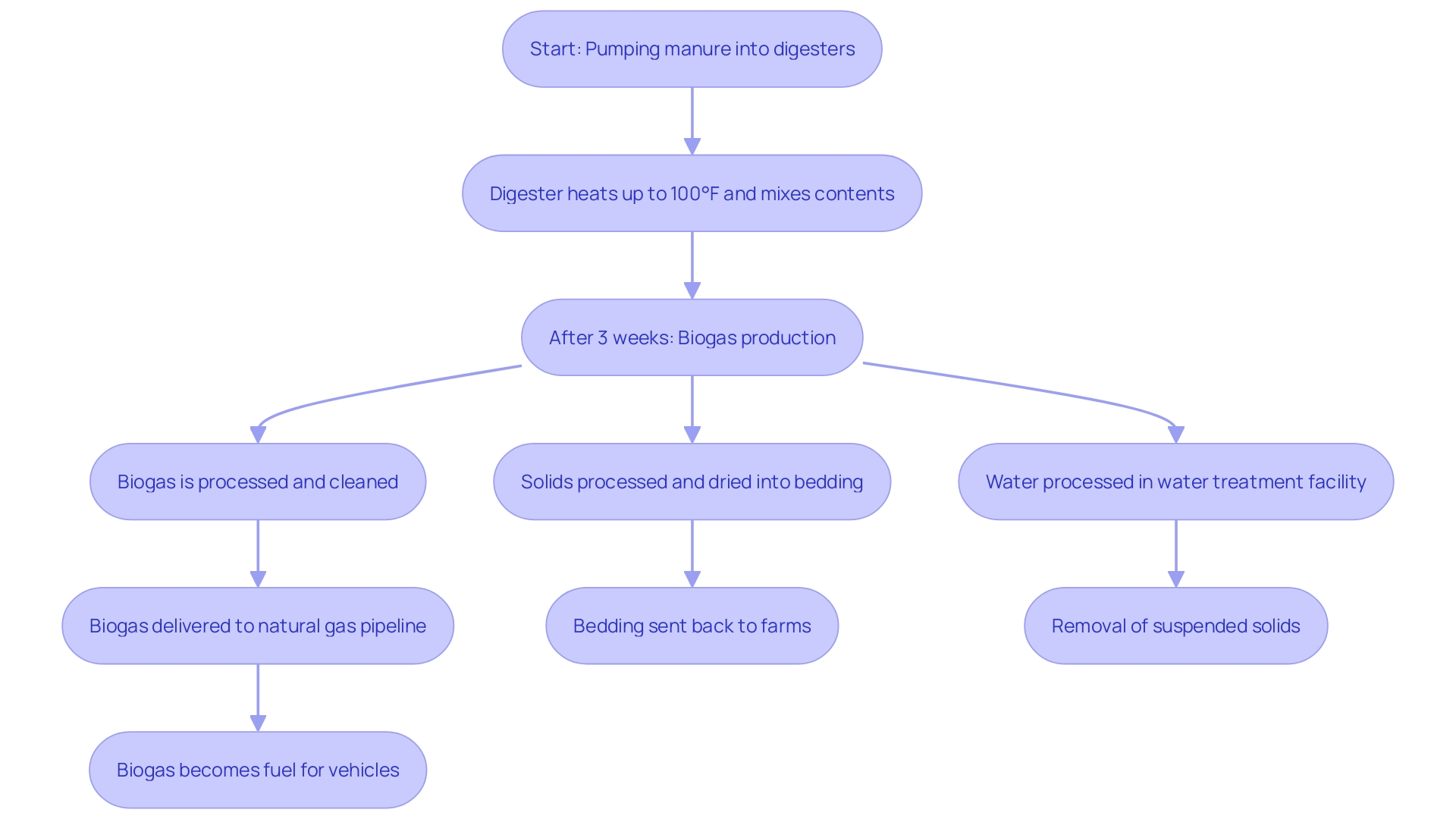
Benefits of Bio Digesters in Waste Management
The implementation of anaerobic treatment systems provides substantial advantages to refuse management methods by greatly decreasing landfill usage, lessening greenhouse gas emissions, and producing renewable energy. In Nigeria, where up to 80% of municipal refuse in some cities is organic, effective solutions for managing organic materials are critical. Anaerobic digesters process organic material efficiently, mitigating odor issues and enhancing stabilization. A significant instance of this method can be observed in Denmark, where sophisticated wastewater treatment procedures employ sludge in digestion tanks to enhance energy generation through gas.
Additionally, anaerobic digestion addresses the challenge of methane emissions from organic matter. For instance, BC Organics in Brown County has successfully integrated manure into digesters to generate renewable energy, while also addressing environmental concerns. This approach aligns with global environmental goals, contributing to a reduction in the ecological impact of refuse management.
Moreover, the use of digestate as a soil amendment closes the nutrient cycle, promoting sustainable agricultural practices. Studies in Central Washington demonstrate the benefits of biosolids application in dryland systems, where nutrient cycles are maintained through land application, enhancing soil health and supporting sustainable agriculture.
The economic advantages of anaerobic digestion cannot be overlooked. By producing power in-house, wastewater utilities can significantly reduce operational costs and even sell surplus power, making the investment in biogas technology financially feasible. As emphasized by Vanguard Renewables, the implementation of anaerobic digestion systems can contribute to a more sustainable future, with reduced refuse, embraced renewable energy sources, and agriculture functioning in harmony with the environment.
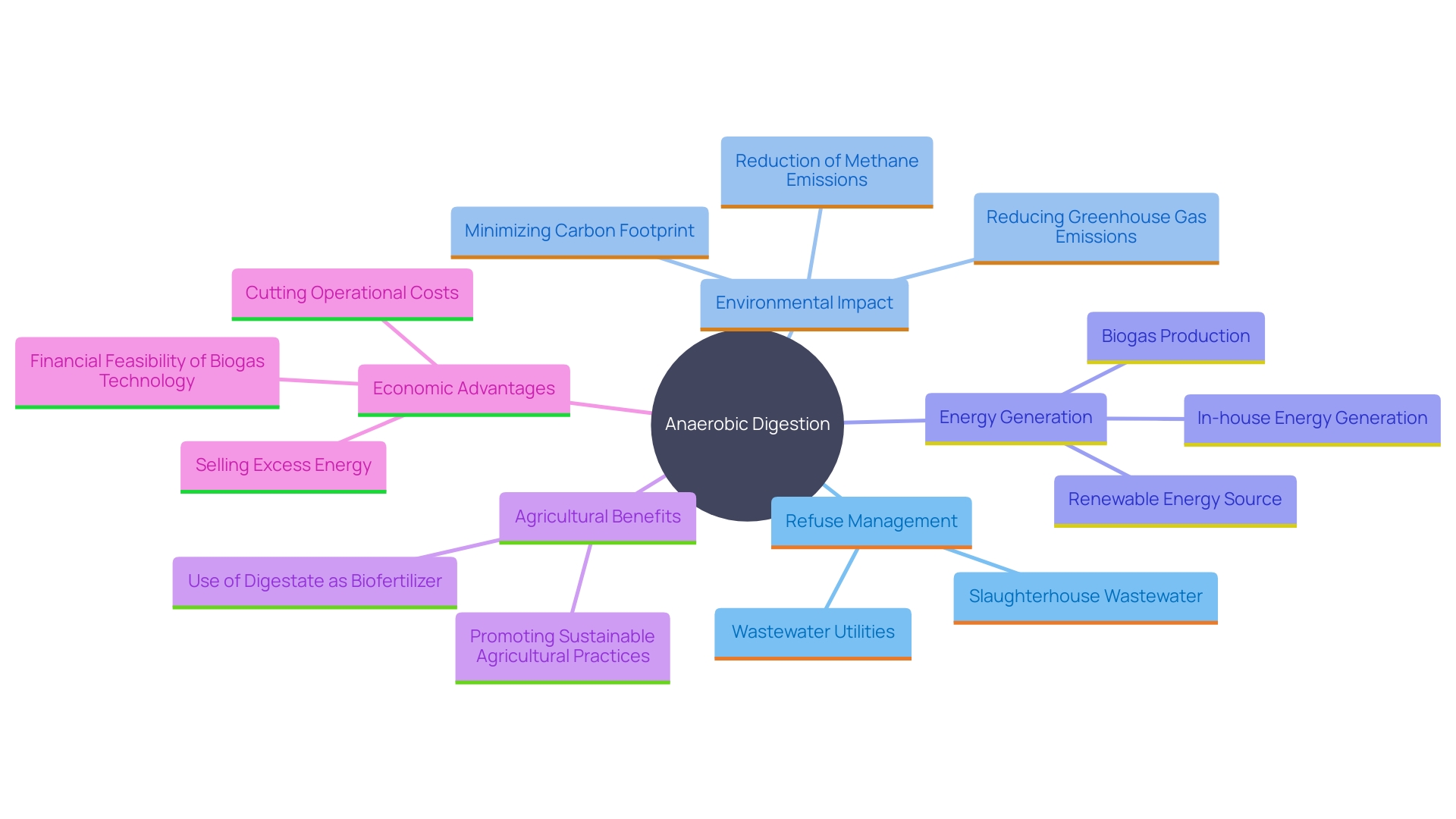
Types of Bio Digesters and Their Applications
Bio converters are available in different varieties, such as batch, continuous, and plug-flow systems, each intended to manage various sizes and categories of organic material. For instance, farm-scale digesters are typically optimized for livestock manure, while municipal digesters are adept at processing food waste from urban environments. Innovations in design, such as modular systems and pre-treatment technologies, significantly enhance digestion efficiency and gas production. This transition towards renewable gas not only aligns with global environmental goals by reducing greenhouse gas emissions but also provides substantial economic benefits. Wastewater utilities can reduce operational expenses by producing power internally and even benefit from selling surplus power. Additionally, using digestate as biofertilizer closes the nutrient cycle, promoting sustainable agricultural practices. The success of biogas technology is evident in places like Denmark, where utilities have transformed wastewater into a valuable resource, enhancing energy security and demonstrating the feasibility of achieving climate neutrality.
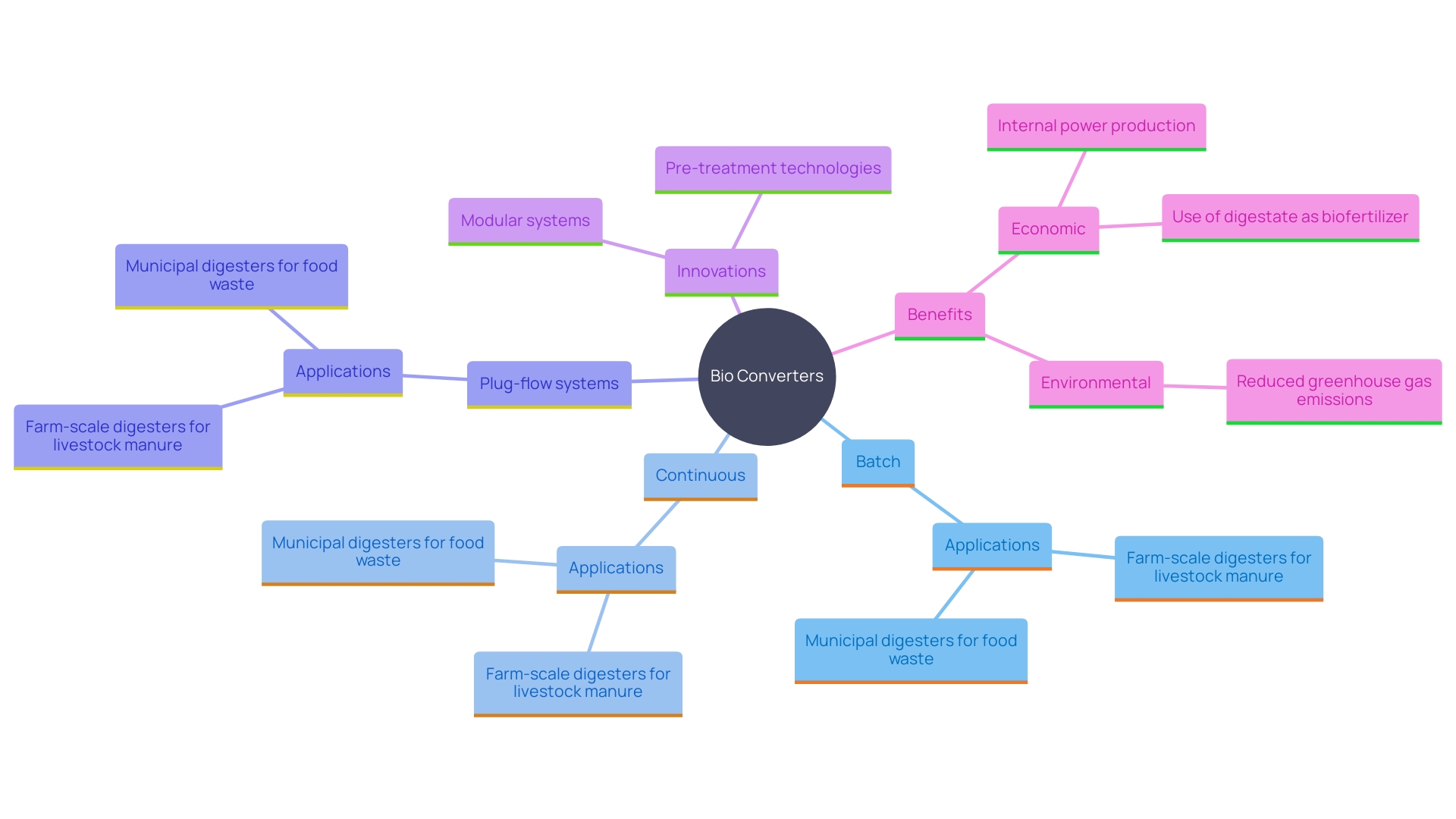
Case Study: Implementing Bio Digesters for Efficient Waste Management
A significant case study can be found in San Diego, California, where a municipal bio processing project has transformed organic material management. This initiative employs an advanced continuous flow bio digester to process organic material from local restaurants and households, significantly increasing the city’s organic material diversion rate. The project not only creates gas that powers local facilities but also produces high-quality digestate, which is used in local agricultural applications.
The American Biogas Council emphasizes that anaerobic digestion systems, such as the one in San Diego, play a vital role in decreasing greenhouse gas emissions and lessening the environmental impact of resource management. By capturing methane from recycled organic waste, anaerobic digestion systems can reduce harmful methane emissions while also providing a sustainable power source. In 2023 alone, nearly 100 new renewable gas initiatives were launched in the U.S., producing sufficient power to supply 600,000 residences.
Furthermore, utilizing digestate as a biofertilizer effectively closes the nutrient cycle, promoting sustainable agricultural practices. The economic benefits are also considerable; producing power internally can greatly reduce operational expenses for wastewater utilities. The capability to market surplus energy offers a monetary motivation, improving the economic viability of investing in renewable energy technology.
In Sub-Saharan Africa, the potential of anaerobic digesters is immense, with the capacity to serve 18.5 million households. The Kenyan government’s Bioenergy Strategy (2020-2027) aims to promote sustainable bioenergy production and consumption, addressing the region's clean cooking needs. The situation of Risper Bett from Kericho, Kenya, illustrates the transformative effect of gas produced from organic matter technology. Utilizing organic gas for cooking and farming has not only enhanced her quality of life but also aided in environmental sustainability.
In summary, the San Diego project and other similar initiatives demonstrate the multifaceted benefits of organic gas technology. From environmental gains to economic advantages, biogas systems are a vital component of the global transition to sustainable power.
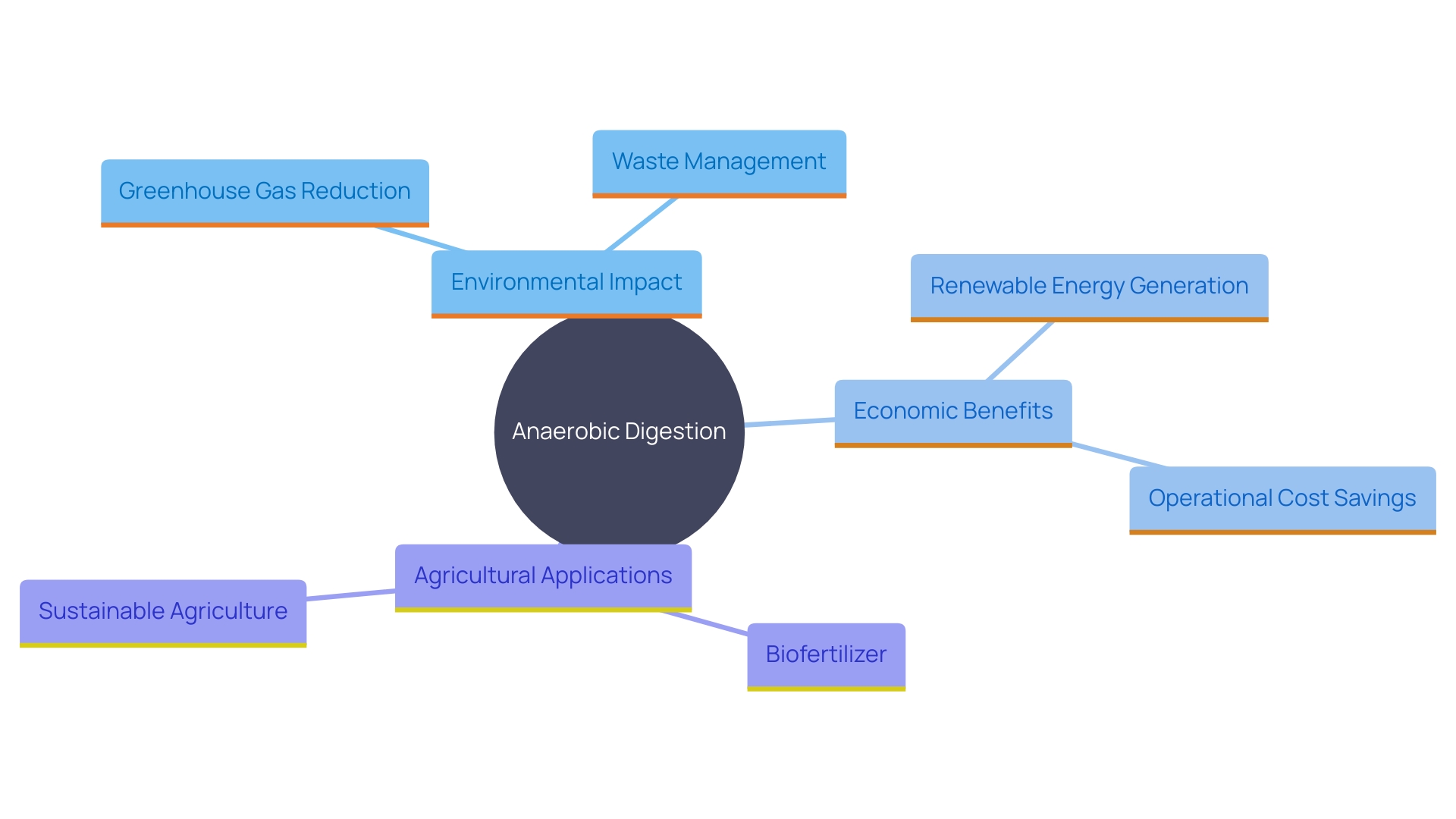
Economic and Environmental Advantages of Bio Digesters
The economic evaluation of bio digester initiatives shows significant cost reductions through lowered waste disposal charges and the production of renewable resources. These projects have shown substantial financial benefits, such as producing power internally, which can reduce operational expenses for wastewater utilities. Furthermore, the capability to market surplus power provides a significant monetary motivation, improving the economic viability of investing in renewable gas technology. For instance, the integration of biogas systems has been shown to provide financial benefits and energy security, as utilities are less affected by market fluctuations.
Environmentally, biological converters play a crucial role in advancing a circular economy by recycling nutrients and reducing methane emissions from landfills. The use of digestate as a biofertilizer effectively closes the nutrient cycle, promoting sustainable agricultural practices. This dual benefit encourages investment in bio digester technology as municipalities and businesses strive to meet sustainability goals. The Colombian refuse sector has experienced considerable advancement in enhancing its management system, emphasizing the potential for methane emission reductions through the adoption of organic gas technologies.
Furthermore, initiatives similar to those backed by the Fraunhofer Institute and Evonik Industries AG demonstrate the capability of organic gas systems to convert refuse into valuable resources, promoting both ecological and financial benefits. These initiatives correspond with worldwide efforts to lower greenhouse gas emissions and encourage sustainable energy solutions, highlighting the extensive influence of anaerobic digestion technology on refuse management and renewable energy production.
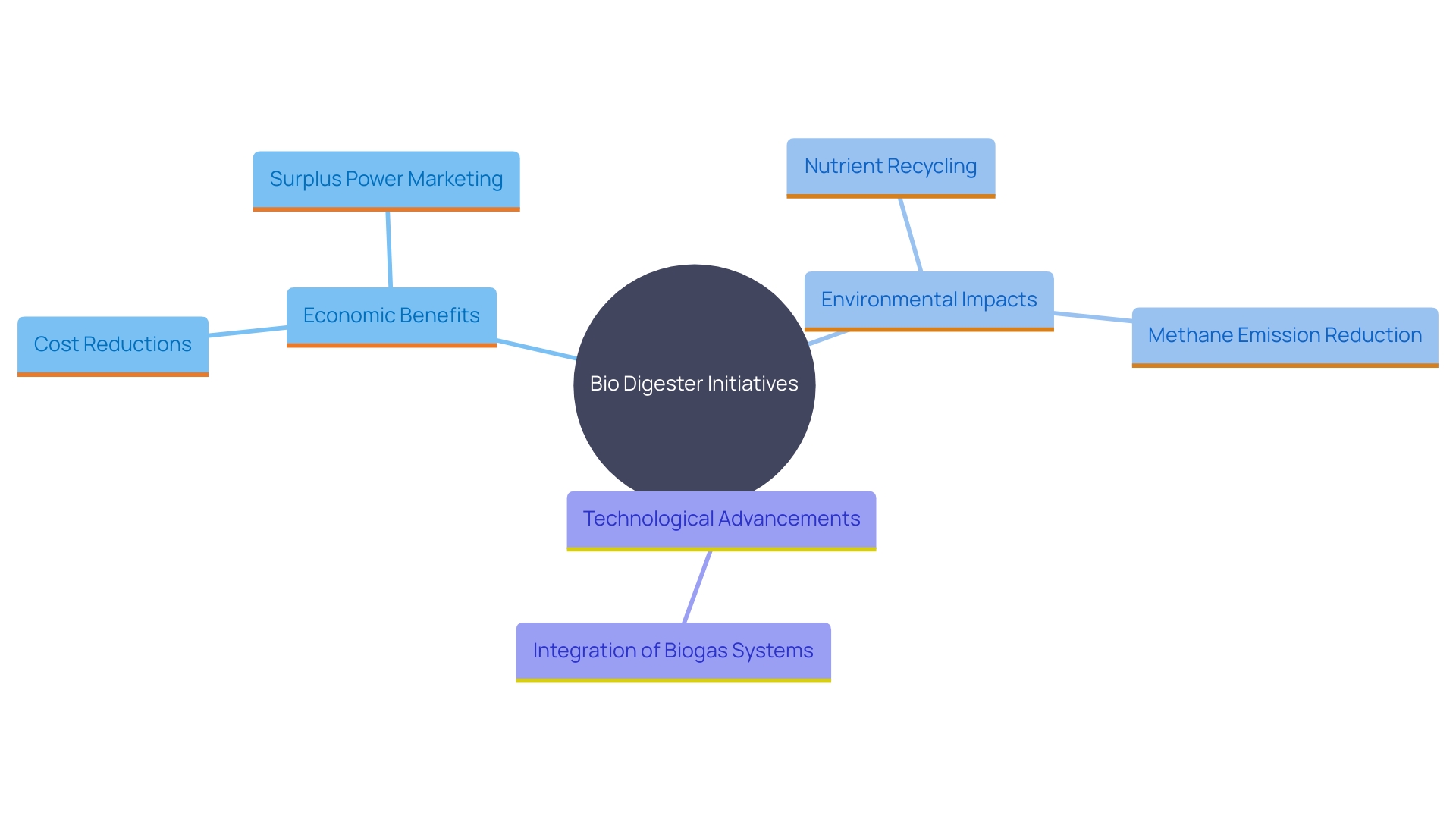
Innovative Designs and Technologies in Bio Digesters
Advancements in biodigester technology have significantly enhanced the efficiency and viability of gas production. The integration of sensors and automation systems has enabled real-time monitoring of digestion processes, thereby optimizing operational efficiency. Furthermore, research into multi-stage digestion systems and the incorporation of thermal hydrolysis pretreatment has shown promising results. These innovations have not only enhanced gas production but also decreased retention times, making biodigesters more adaptable for various waste streams.
The possibility for organic gas as a sustainable power source is significant. For instance, wastewater utilities can utilize anaerobic digestion gas to align with global environmental goals, reduce greenhouse gas emissions, and minimize their carbon footprint. The economic benefits are equally persuasive, as producing power internally can significantly reduce operational expenses. Additionally, the capability to market surplus power offers a monetary motivation, improving the economic viability of investing in anaerobic digestion technology. These units effectively transform organic gas into electricity and heat, maximizing the power content and providing sustainable solutions for both electricity and heating requirements.
Moreover, the process generates digestate, a nutrient-rich byproduct that can be used as biofertilizer, contributing to sustainable agricultural practices. This method efficiently completes the nutrient cycle, encouraging a more sustainable future where refuse is reduced, renewable power sources are welcomed, and farming functions in harmony with the ecosystem.
Real-world implementations, like Denmark's approach to transforming wastewater into biogas, showcase the combination of innovation, efficiency, and sustainability in action. Each step reflects a commitment to environmental practices and sustainable solutions, positioning wastewater utilities as leaders in resource management. The incorporation of intelligent technologies, like IoT and AI, further improves the capability of anaerobic digestion systems, providing a comprehensive method to address management and power generation challenges.
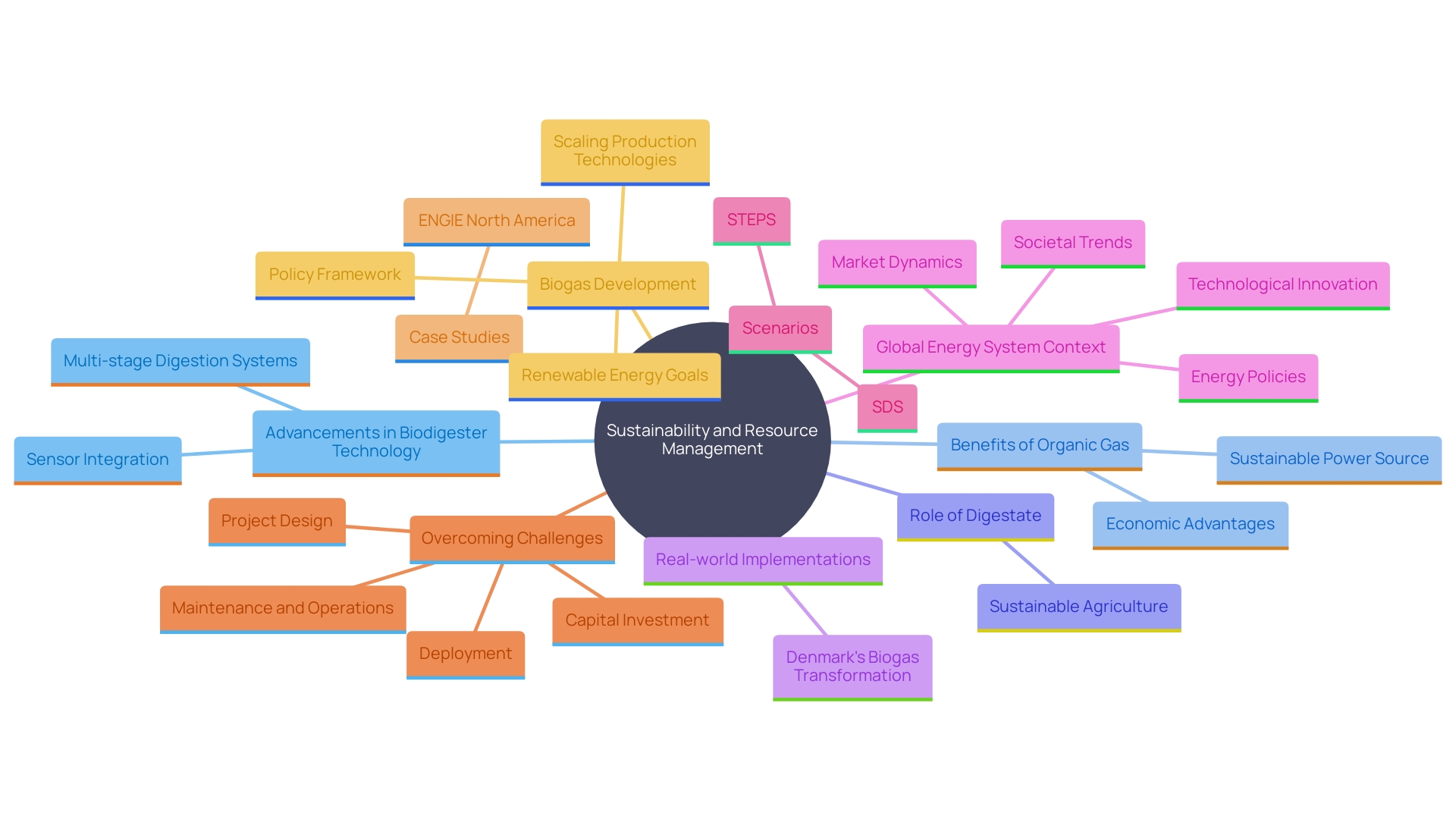
Challenges and Solutions in Bio Digester Implementation
Bio digester projects, while advantageous, encounter significant challenges including high initial capital expenditures, regulatory barriers, and gaining public acceptance. Addressing these challenges necessitates tactical involvement of stakeholders and transparent communication of the many advantages these initiatives provide, including enhanced resource management and sustainable power generation. For instance, Safisana's initiative in Ghana has successfully integrated fecal sludge, solid waste, and wastewater treatment to produce renewable energy and biofertilizers, enhancing sanitation and environmental conditions in urban areas.
Moreover, financial models that leverage government incentives and foster partnerships with private entities are crucial in addressing funding barriers. As demonstrated by Denmark's thorough method of converting wastewater into renewable gas, such partnerships not only offer economic benefits and power security but also aid national plans for climate neutrality. This model can be emulated by others, including U.S. wastewater treatment plants, to transition towards resource recovery facilities.
'Moreover, the significance of waste-to-power initiatives is highlighted by the experiences in New Brunswick, where anaerobic converters are generating clean power jobs and improving local power security. These projects play a vital role in the broader energy transition, addressing waste treatment issues, and reducing pollution, as evidenced by the positive impact of biogas on communities in Kenya and other regions.
In conclusion, addressing the financial and regulatory challenges while effectively communicating the benefits can significantly mitigate public concerns and make bio digester implementation more accessible.
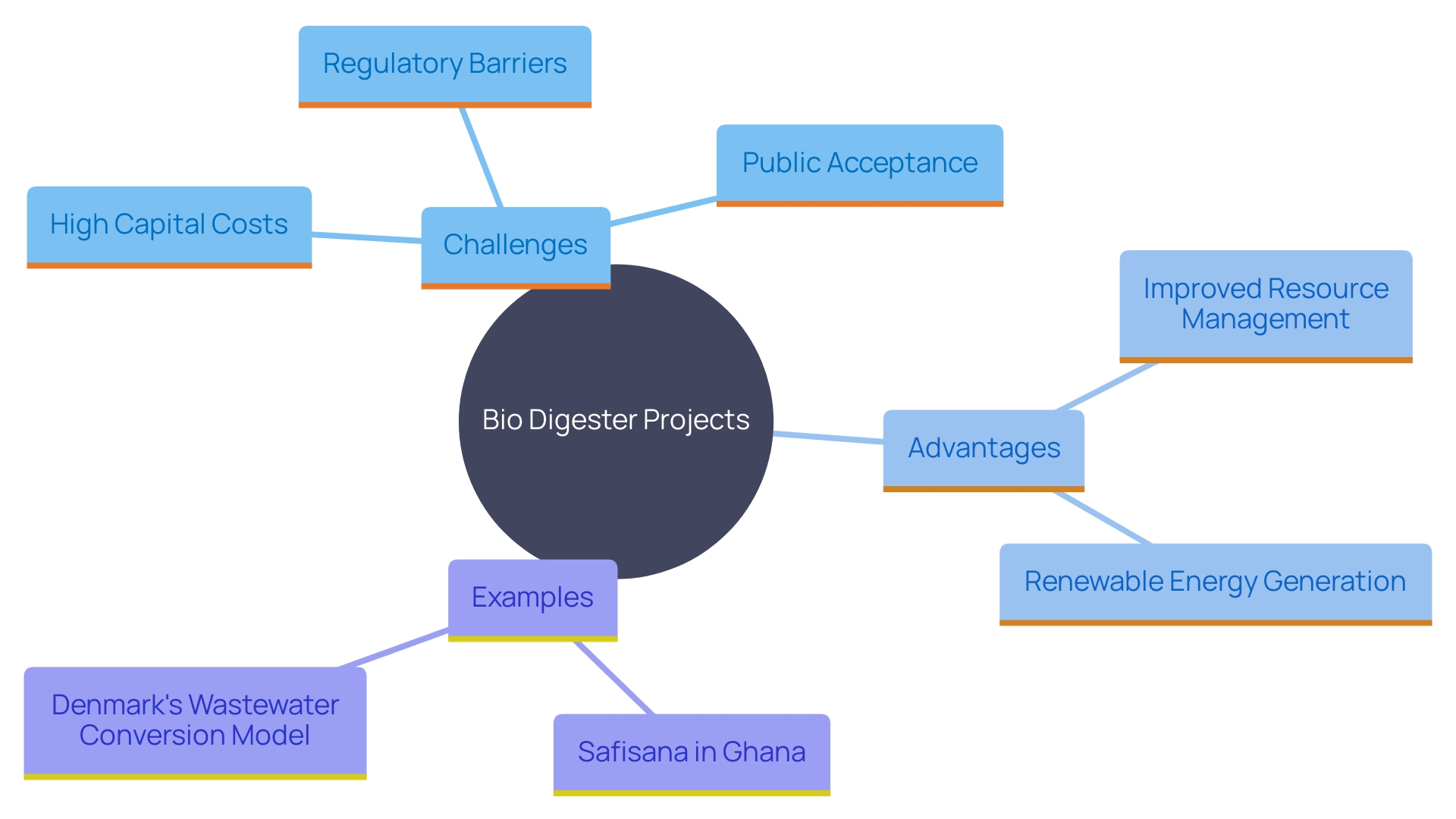
Conclusion
The exploration of bio digesters reveals their pivotal role in advancing sustainable waste management and renewable energy production. By utilizing anaerobic digestion processes, these systems effectively convert organic waste into biogas, primarily methane and carbon dioxide, while simultaneously generating valuable by-products. The case studies and examples presented illustrate how bio digesters not only alleviate environmental pressures associated with organic waste but also contribute to energy security and agricultural sustainability.
The multifaceted benefits of bio digesters extend beyond mere waste reduction. They significantly diminish landfill usage and greenhouse gas emissions, while also offering economic advantages through energy generation and cost savings for wastewater utilities. The integration of innovative technologies further enhances the efficiency and scalability of these systems, presenting a compelling case for their adoption across various sectors, including agriculture and municipal waste management.
As global environmental goals increasingly emphasize the need for sustainable solutions, the potential of bio digesters becomes ever more evident. By closing the nutrient cycle and promoting renewable energy sources, these systems align with the principles of a circular economy. Addressing the challenges associated with implementation, such as financial barriers and regulatory hurdles, will be crucial in unlocking the full potential of bio digesters.
Continued investment and innovation in this field can lead to a transformative impact on waste management practices and energy production, paving the way for a more sustainable future.




